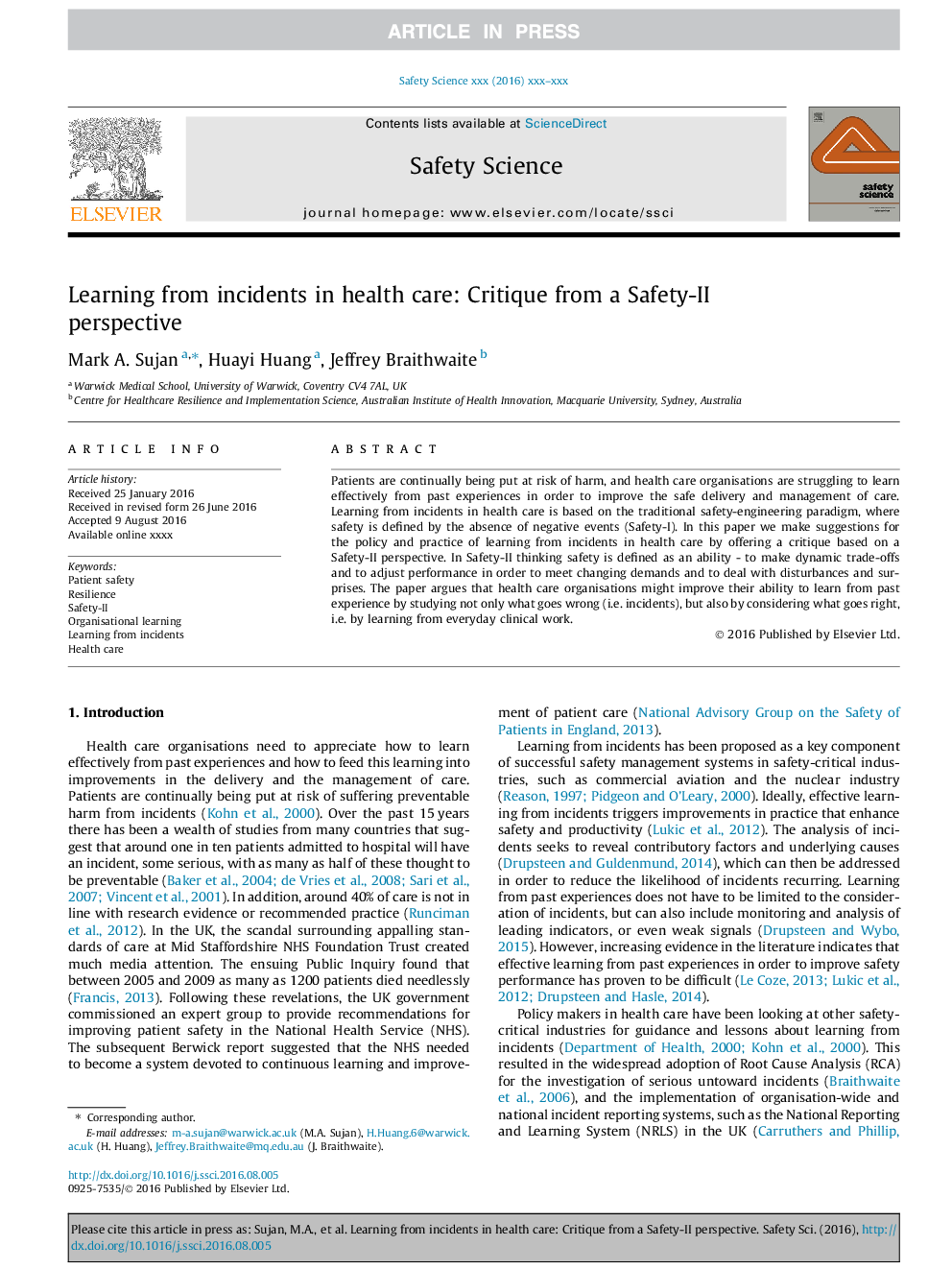| Article ID | Journal | Published Year | Pages | File Type |
|---|---|---|---|---|
| 4981159 | Safety Science | 2017 | 7 Pages |
Abstract
Patients are continually being put at risk of harm, and health care organisations are struggling to learn effectively from past experiences in order to improve the safe delivery and management of care. Learning from incidents in health care is based on the traditional safety-engineering paradigm, where safety is defined by the absence of negative events (Safety-I). In this paper we make suggestions for the policy and practice of learning from incidents in health care by offering a critique based on a Safety-II perspective. In Safety-II thinking safety is defined as an ability - to make dynamic trade-offs and to adjust performance in order to meet changing demands and to deal with disturbances and surprises. The paper argues that health care organisations might improve their ability to learn from past experience by studying not only what goes wrong (i.e. incidents), but also by considering what goes right, i.e. by learning from everyday clinical work.
Related Topics
Physical Sciences and Engineering
Chemical Engineering
Chemical Health and Safety
Authors
Mark A. Sujan, Huayi Huang, Jeffrey Braithwaite,
